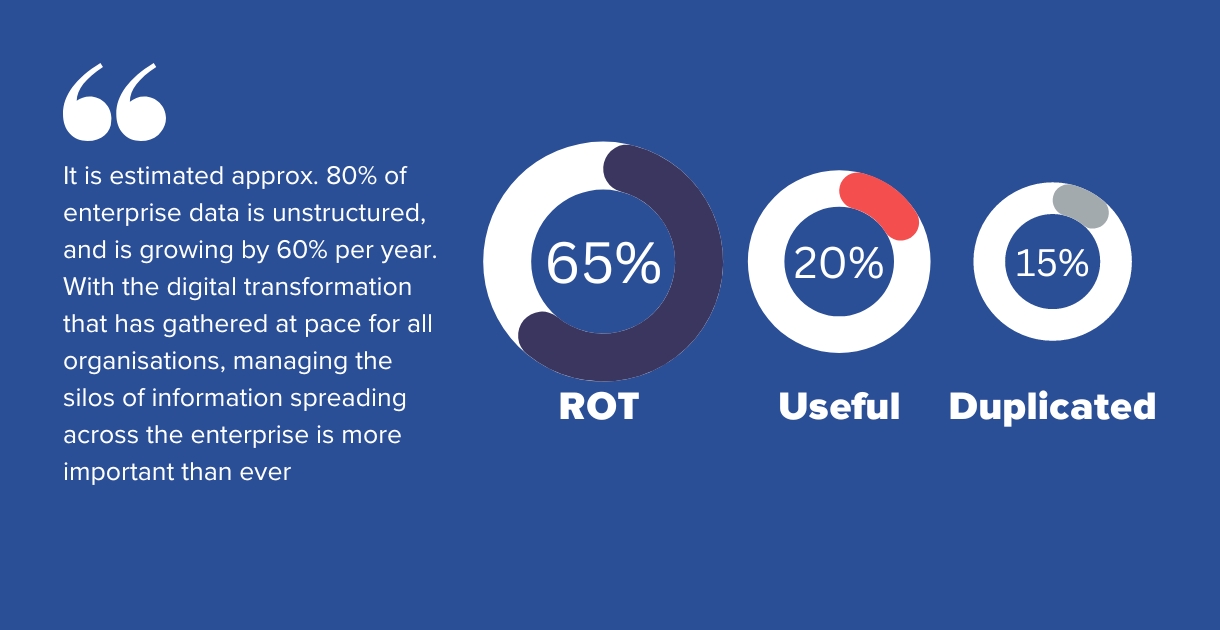https://automated-intelligence.com/solutions/data-cleanse-and-rot/
An estimated 80% of organisational data is unstructured, and that up to 65% is ROT. ROT refers to redundant, obsolete and trivial data that is no longer fit for purpose or of any value. Organisations are increasingly creating more information daily, and in a wider range of formats. This information includes everything from documents, records, reports and files, to phone recordings, emails, videos and photos – and without governance.
Perhaps the data is duplicated across multiple locations, over-retained due to lack of policy enforcement, or information is incorrect or outdated.
Not all the data an organisation holds is required, and by over-retaining this information, the business is exposed to multiple risks, paying excessive storage costs, and experiencing an impact on business productivity.
If you don’t know what data your estate holds, then you can’t decide what data needs cleansed, what needs to be kept or archived. So, most organisations keep it all.
ROT refers to redundant, obsolete and trivial data that is no longer fit for purpose or of any value. Perhaps the data is duplicated across multiple locations, content is redundant, information no longer needs to be kept or is incorrect or outdated. It’s this non-business-critical content which is the problem.

For organisations, understanding your data is paramount. The analysis from understanding your data will help determine informed business decisions.
Due to the increasing amount of content generated during day-to-day business activities, disk space is at a premium.
Over-consumption impacts performance, from users storing data inappropriately, data becoming irreversibly lost due to backups not completing, and employees accessing old and inaccurate information, not to mention wasting valuable time searching for the correct information. This inevitably results in a loss of productivity.
Temporary measures to reduce data volumes will only increase the risk that current data is deleted, without any recovery options.
As a result, urgent purchases of expensive disks are often seen as the solution. This only increases storage costs, without solving the data problem.
Our cloud-hosted solution, Datalift, cleanses and identifies ROT data within 24 hours of deployment, enabling the removal of low value content, releasing disk space and ensuring that the information is accurate, up-to-date and useable. Data cleansing also negates the need for additional expensive storage facilities, reducing management costs.
Classifying your organisational data using Datalift for Data cleanse and ROT provides a range of features including:
Taking control of your growing unstructured data. Our customers are experiencing a wealth of benefits including:
Users can easily and efficiently find and manage files. Benefit from improved data quality and ensure people have appropriate data access and availability to do their jobs while adhering to data governance strategy. Reduce storage costs with up to 70% of information being remediated.
Gain informed insights and full visibility of your data estate to enable appropriate technology and investment decisions to support ongoing data governance demands.
Minimise undetected threats and data breaches. Better manage and map unstructured data against multiple regulations, reduce impact of audit demands and improve response and impact minimisation for data breaches.